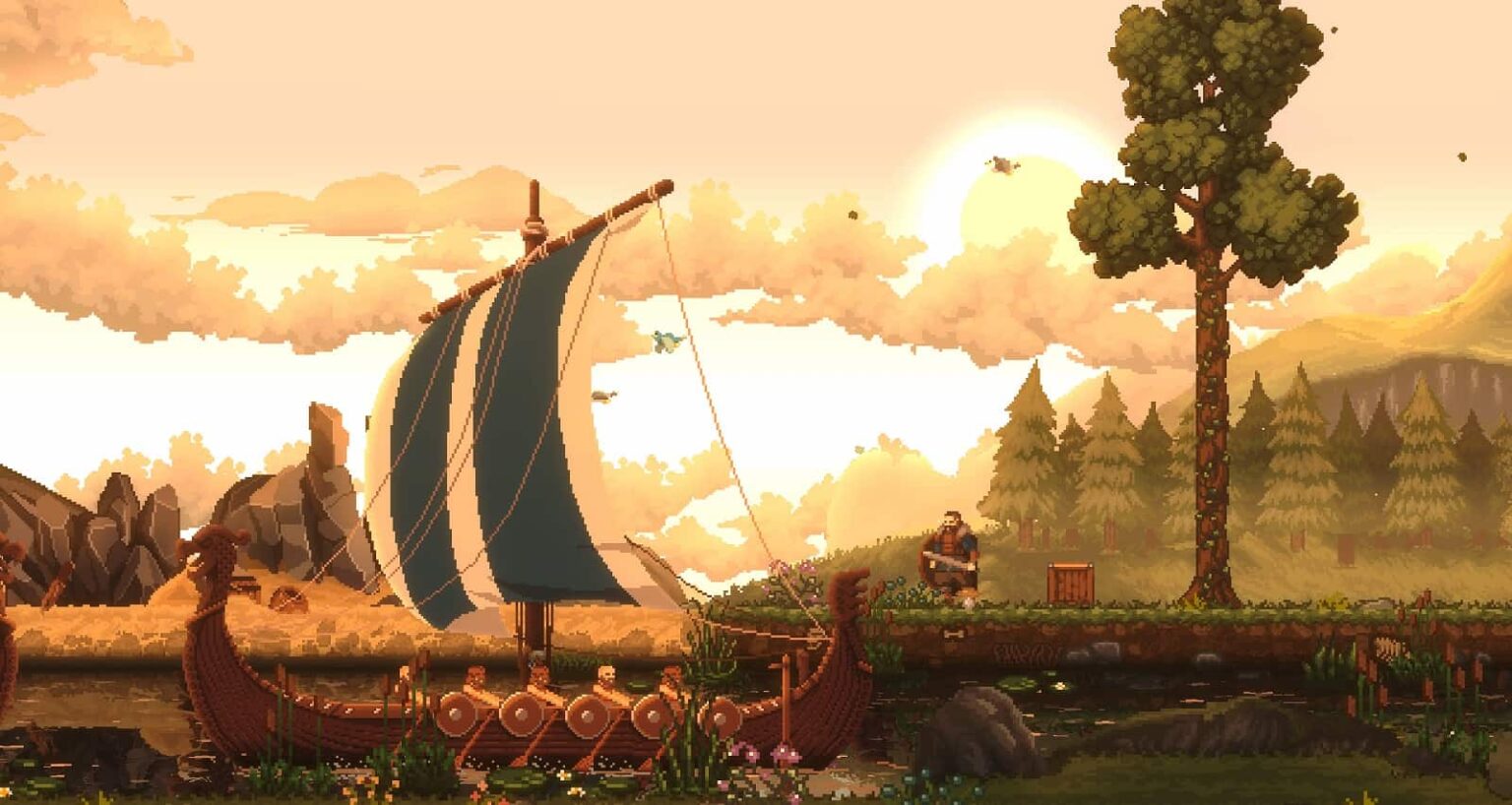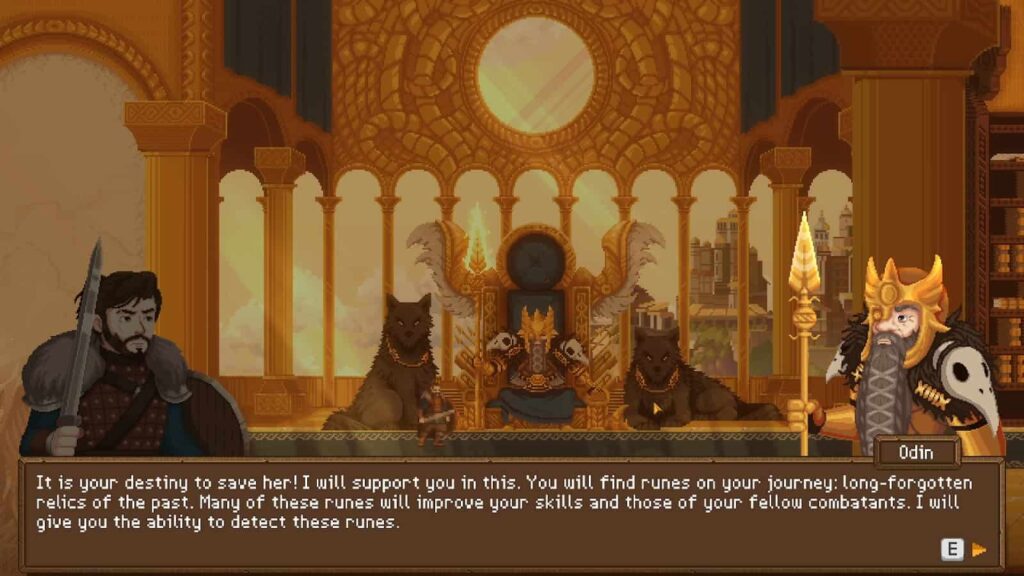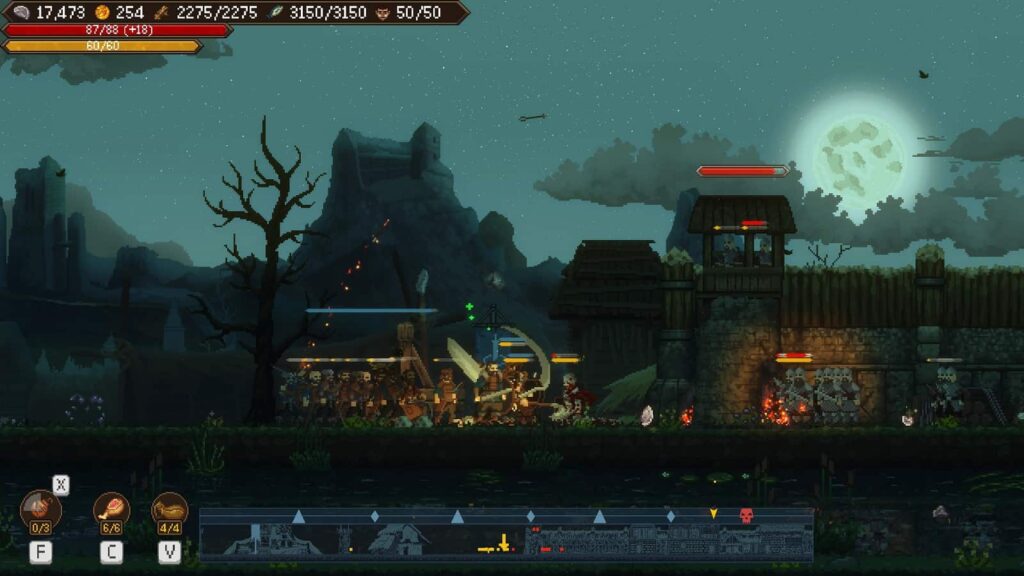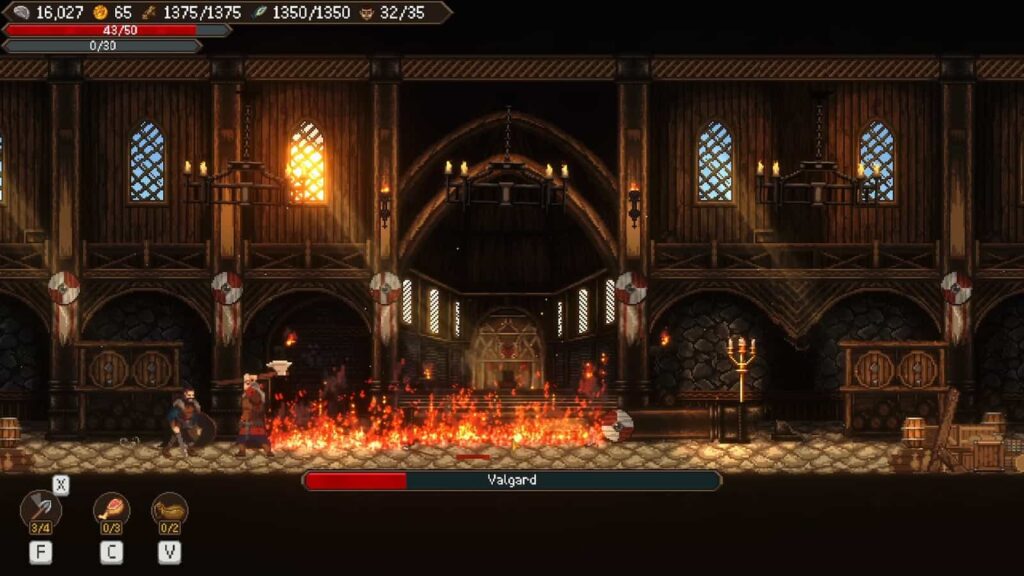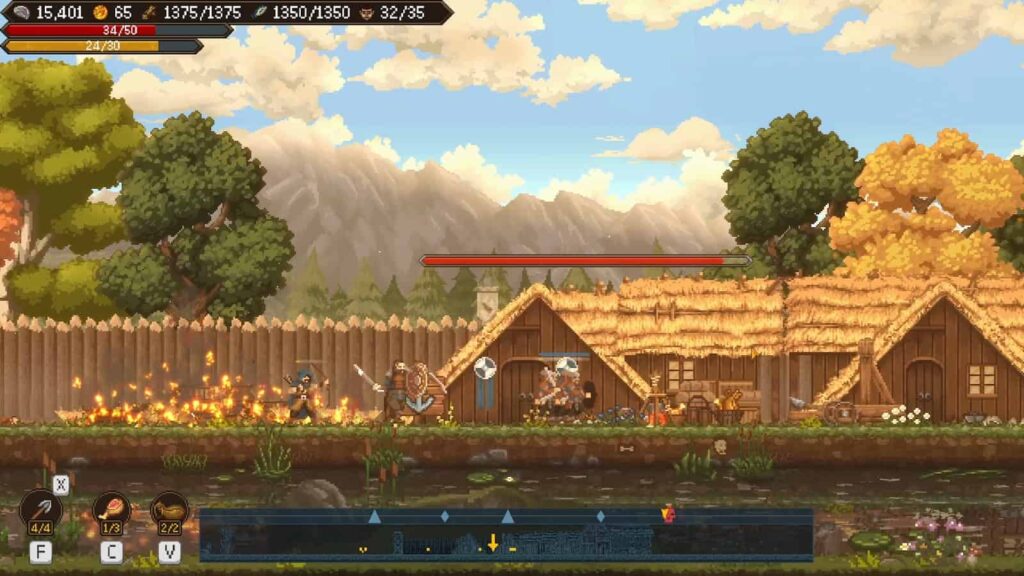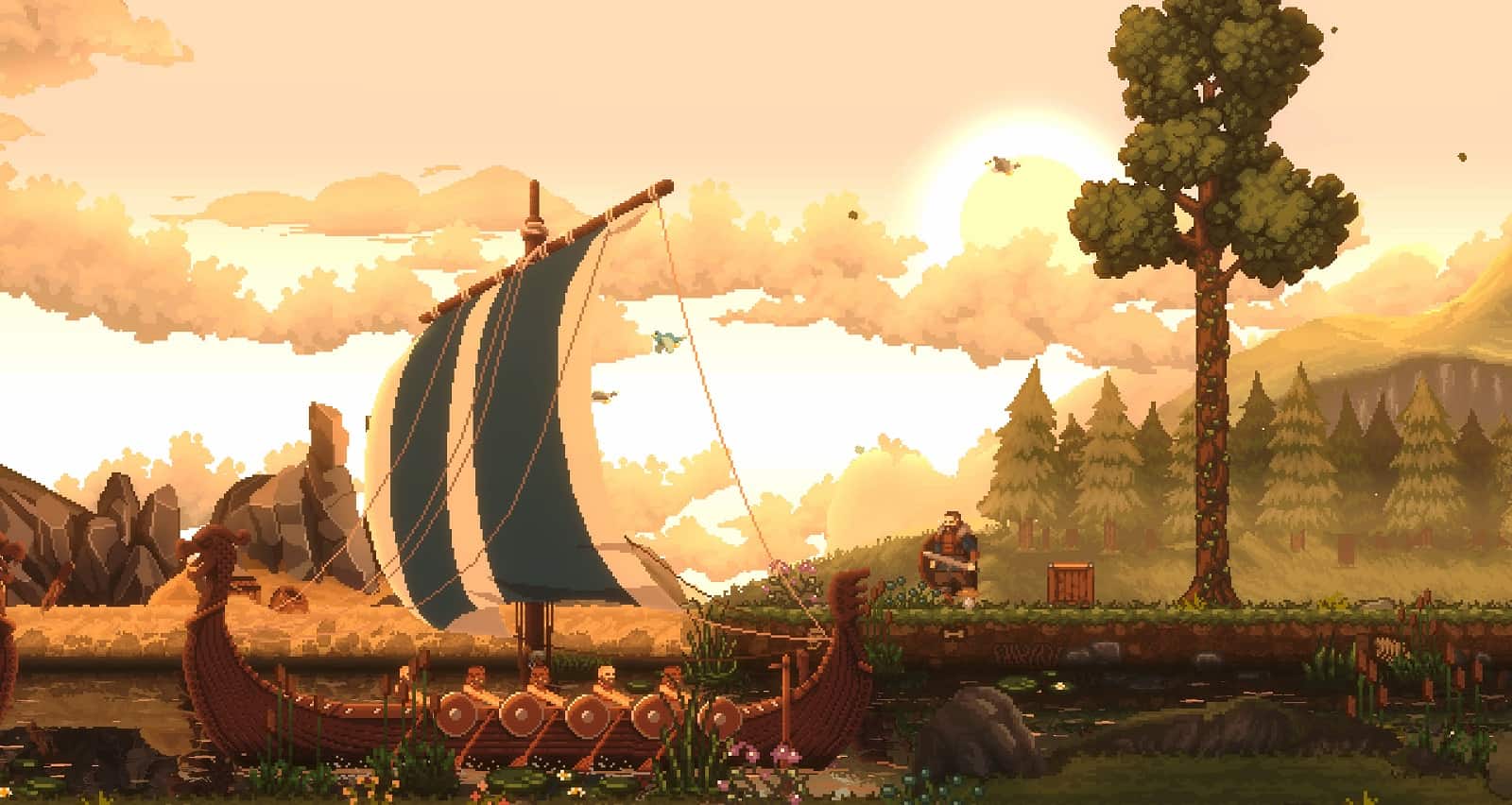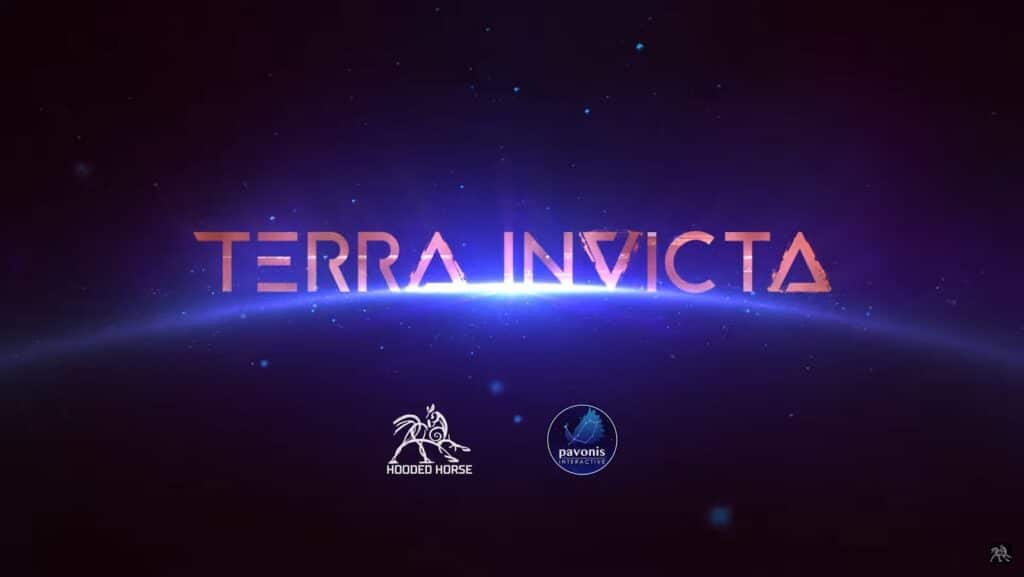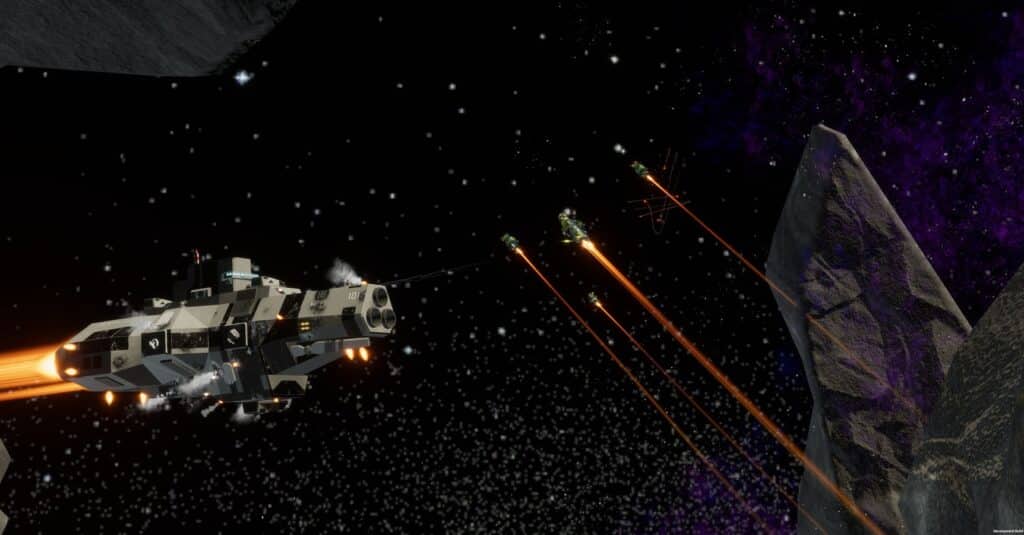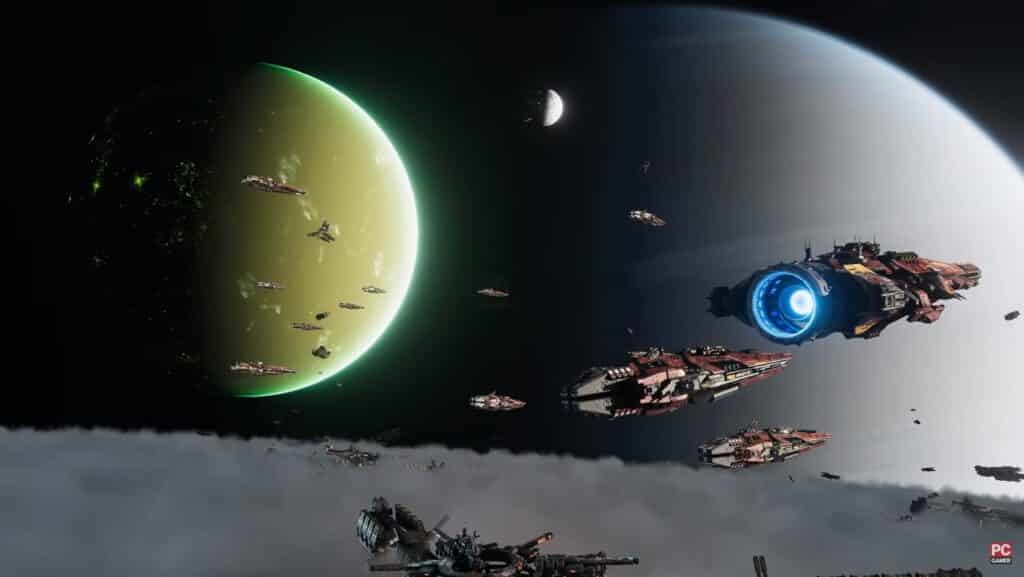There aren’t many side-scrolling base building games in the same vein as the Kingdom series but every so often a new game in the niche genre appears and is a welcome sight to see. But give it a few minutes, and you’ll quickly find out how Sons of Valhalla takes tried and true base management combat and incorporates combat in a way that may appeal to many old-school gamers.
Sons of Valhalla is a side-scrolling base building game set in the Viking Age. Players take control of Thorald Olavson as he embarks on a quest to rescue his wife who was kidnapped and taken to the foreign lands of England. He is determined to save Raya at all costs, even if it means blindly trusting the Aesir gods.
On the way to England, a massive storm destroyed Thorald’s ship and killed all but one of his crew. He was fated to join his soldiers in Davy Jones’s locker but Odin had other plans. He tells Olavson that he is destined to save Raya. To show his full support, the Allfather will deny Thorald access to Valhalla but he will have to leave behind a Rune each time he dies henceforth. Thorald returns to Midgard and thus begins the campaign to save Raya.
After a short tutorial on runes and base building, you and your trusted adviser Hallstein begin to look for any leads on Raya’s whereabouts, starting with the man who kidnapped her.
The majority of Sons of Valhalla’s gameplay revolves around taking over outposts and settlements, and pressing back until you reach the enemy’s stronghold in the region. There are a total of 5 levels in the game and for one reason or another, Raya is never in the same place for long. This harkens to the old days when Mario was told that Princess Toadstool was in another castle. The second time was a coincidence. The third time’s a pattern by that point. Building an army is relatively straightforward in Sons of Valhalla, you have your choice of melee units, one archer class, and a handful of units useful in sieges.
The rune system is interesting, to say the least. It’s your typical fair of power-ups for yourself and for your army. For each rune you pick up on the battlefield, you gain a power equivalent to the rune’s rarity. Thankfully, there are a good number of runes to choose so you shouldn’t have too much trouble acquiring runes that fit your playstyle.
Siege warfare is by far the best part of the game. There’s just something satisfying about ordering your units to set up a shield wall, holding the line until your archers (or catapult) take care of enemy ranged units while you throw fire pots on the walls hoping to light the defenders on fire. If you keep your forces intact long enough, you can command your soldiers to push forward and topple what’s left of the enemy’s defenses.
Base building and managing your economy is also relatively simple. You have three resources on hand to build your forces, Food, Wood, and Hacksilver. All three resources can be acquired from field chests or by defeating enemies. The most consistent way of getting food and wood is to build camps for them. The game is then about choosing which one you want to prioritize. If you want to prioritize unit upgrades and troop production, you build more food camps. If you want to prioritize settlement and siege upgrades, you build more wood camps.
Additionally, you get a set amount of bonus resources after each visit from a Viking longboat and for each outpost under your control. There are also gold coins but you get them after taking over bases and they’re mostly used to upgrade your ranged weapons. I commend the developers for making it so that the game maintains a brisk pace. I didn’t stay in camp for long stretches waiting for resources to roll in. Whenever there was a gap between upgrades, I would skirmish outside the enemy’s walls until I had the resources to upgrade facilities. The wait wasn’t long at all. By the time I was done
Because the game is geared toward action combat, I’m always on the front lines ready to take down any enemy who dares to 1v1 the Vikings’ commander in a duel to the death. Of course, it’s not as dramatic as I make it out to be. I had reason to stay alive, after all. It is mostly due to not wanting to sacrifice one of my runes to Odin for another crack at the enemy.
Another highlight of the game is the boss battles. They are intense prolonged fights where you can’t afford to make too many mistakes or get too greedy. Looking back, it’s like Castlevania meets Souls-like in a way. The bosses have telegraphed attacks and you rolling costs stamina. Stamina you’ll need to initiate heavy attacks. The end of the battle usually results in the dying boss telling you how futile your quest is before pointing you to the next domain.
There’s also a brief stealth section during the middle part of the story. It came out of right field and I was not expecting it. I believed I was fated to go along the river and pillage castles and be told that my wife was in the next castle over. Little did I know that a stealth sequence was in the cards as well. It was done well enough. Unfortunately, it was a one-off sequence and I never did stealth again for the rest of the playthrough.
The background music did a very good job of setting the pace for most of the siege campaigns. However, hearing the same flute and drums playing over extended periods can get monotonous. Thankfully, the levels aren’t so long that you start to get tired of sieging settlements. As long as you are active in all aspects of settlement building, you should be good for the rest of the game.
I like the retro look the game is going for. I’m an old-school gamer who loves the occasional 16-bit pixel art style whenever possible. But I’m not vibing with the character’s 2D portraits for some reason. They feel like they were made for another game and somehow ended up in Sons of Valhalla. The opening and closing cutscenes later enforce this. Maybe it is intentional, a nod to 8-bit characters looking far different from their portraits. But I highly doubt it.
The only thing that really annoyed me about the game is that the army is prone to breaking rank and advancing without orders. I know it’s because the enemy is spread out and the spacing allows them to target the soldier in the backlines. Chill out already. I’ve lost track of many times I had to put an advance on hold and wait for reinforcements. All because the AI does not adhere to a ‘hold position’ command. How ridiculous.
Sons of Valhalla may have fallen short in a couple of categories but it made up in the ones that truly matter, particularly in the gameplay department. You can also complete the campaign in a little more than 8 hours. I’ll still take that over any bloated open-world collect-a-thon any day. If you like 2D action games with a hint of base management, you can’t go wrong with Sons of Valhalla.



